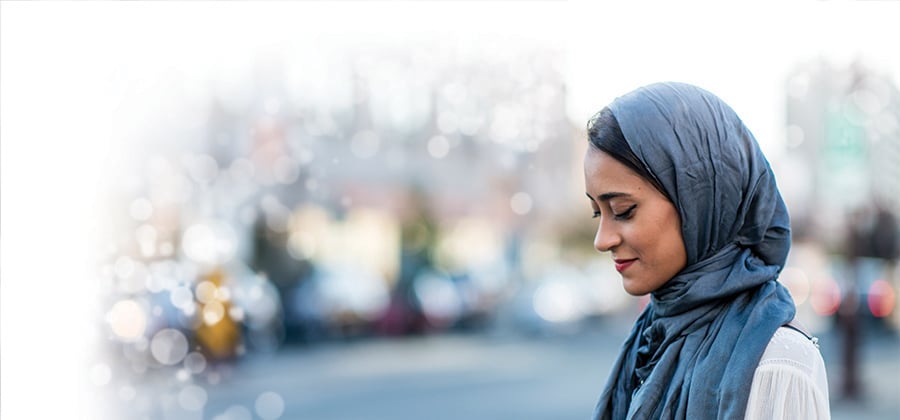Entering the new decade beauty with a clean slate...
One of the best aspects of the beauty industry is its constant evolution. As formulators and brands, we have endless opportunities to grow, expand our offerings and reposition our products. Clean beauty has most recently introduced one of the largest evolutions in our modern marketplace, spanning all segments and geographies.
Clean beauty is much more than a trend or marketing tactic—it’s becoming an industry-standard tied to the authenticity of a brand. As we all work to create the world we want to live in, consumers are making purposeful choices about where they spend their money and what they deem important for now and the future. Modern beauty brands are taking a multi-faceted approach, purposefully incorporating lifestyle and value-based themes rather
than focusing solely on beauty. Finding a way to combine efficacy and performance with clean, consciously-crafted ingredients is essential to owning space in the new market.
Consumers are increasingly looking for brands to better align with their personal values, and are demanding a new level of transparency. Young adults, in particular, are requiring more of brands, to gain their loyalty. 42 percent of Gen Z adults rank following environmentally friendly practices as one of the best ways for a brand or company to show that they represent their personal values (Mintel, 2019). The brands that can rise to the occasion, demonstrably aligning to the principles of their key demographic, are the ones that will continue to grow.
Natural beauty makes way for clean beauty
The 2010s saw a sharp and steady focus on health and environmental considerations, with consumers self-educating through podcasts, social media, apps, influencers, and an array of other on-the-go content. Though often grouped in with natural beauty, clean beauty is rapidly expanding as a separate focus, reflected in claims such as sustainable, vegan, ethical, responsibly-sourced, and more.
Mintel reports that more than one third of consumers now look for clean beauty products (2018). Clean beauty aims to move past merely including free-from claims to focus on ingredient safety, familiarity, and integrity. It encourages brands to seek the latest innovation in ingredients, including those that have a low environmental and ethical impact
Many retailers are widely adopting a “clean beauty” focus over “natural beauty”, which is shaping how consumers shop and explore new products. In 2018, Target introduced a section in its stores across the US, focused entirely on clean beauty products. They followed that up with their “Target Clean” icon in 2019, which helps consumers quickly identify products that meet certain free-from claims. Sephora also has a similar and popular “Clean at Sephora” icon in use across its stores and on its website.
Consumers are also concerned with sustainability and now expect brands to be environmentally friendly, creating opportunities for brands to emphasize sustainable production methods and environmentally friendly packaging (Mintel, 2019). In their 2019 US survey, Genomatica found that one in four (26 percent) consumers say they would look for ways to spend more money with their favorite brand if that brand increased their sustainability.
If you’re looking to see additional evidence of the growing focus on clean beauty, look no further than your favorite apps. Social media mentions of #cleanbeauty are rising quickly across Instagram, Pinterest, and Twitter, as consumers continue to reinforce their commitments and pride in the products they use. Although #naturalbeauty has a higher volume of social media mentions, the continued increase in #cleanbeauty mentions is both drastic and steady, continually closing the gap. (Source: Infegy/Mintel).
A strategic approach is essential
The challenge this new shift presents is that industry experts do not yet expressly agree on the definition of clean beauty. And, as with naturals, clean beauty is not regulated, so each brand must work to define its own version of clean beauty. The genuine fear, of course, is being perceived as greenwashing or applying random clean-sounding claims without any real transparency. In a world where “cancel culture” can turn a well-loved brand to most-hated within a matter of days, it bodes well for brands to proceed with caution as they explore this space. 46 percent of consumers say they’ve boycotted a brand before, 24 percent did so because of unsustainable products, while 23 percent did so due to unsustainable practices (Genomatica, 2019). A strategic approach is essential, requiring brands to spend time carving out a space they can confidently occupy within the clean beauty realm.
According to Euromonitor, global consumer trust in green labels in 2019 hovered below 60% for claims such as recyclable, environmentally conscious, eco-friendly, natural, organic, and sustainably produced (Euromonitor, 2019).
This lack of trust leads to increased ingredient scrutiny, and a growing need for the industry to help consumers understand what to look for on labels and how to understand ingredient lists. While consumers are generally more well-informed than ever, there is still work to do in educating them. 27 percent of consumers still don’t understand the difference between “natural” and “clean” (Mintel, 2019).
With so many competing sources of information, brands need to help provide clarity, using transparent practices to help increase ingredient literacy. Within the industry, we know that ingredient innovation is the only way to deliver the efficacy consumers expect while aligning with their clean beauty values and sustainable expectations. However, we need to share that knowledge with the consumers themselves, helping them understand product claims, ingredient performance, and more.


The expectations moving forward
As the clean beauty movement continues to evolve, we can expect brands to explore new ways to authentically align to the values of their consumers, and be a resource for questions and education. We can also expect ingredient innovation to continue to shape future product claims and performance. Transparent sustainability practices will become a growing requirement, and the list of ingredients with free-from claims will continue to expand.
We can also expect some wins and losses, new market disruptions, new environmental concerns, and unexpected micro and macro trends. However, the most critical expectation is from consumers: they expect clean beauty to be the industry’s path forward, and because of that, we need to do our best to help define it.

Accédez à votre FDS dès maintenant via votre compte. Les nouveaux clients peuvent en demander une ici.

![What is Beauty with a Clean Slate? [translations pending] banner image](https://discover.univarsolutions.com/assets/components/phpthumbof/cache/default-banner.2d43893cc9ef3517824746e94ab2c4418549.png)

 EMEA
EMEA Amérique latine
Amérique latine Amérique du Nord
Amérique du Nord Asie
Asie